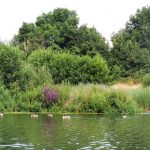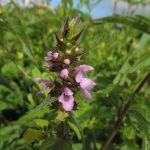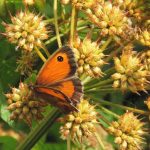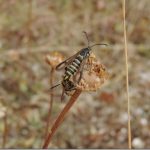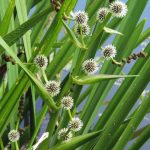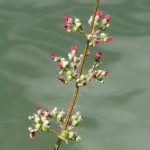Fiona Brown led a walk which started from Dorney Court Garden Centre on Wednesday 11 July. The first part of the route was along the south bank of the Jubilee River. Following a month with high temperatures and no rain, the grass was dry and brown. The river bank, in contrast, was green and lush, with flowers including Purple-loosestrife, Great Willowherb, Marsh Woundwort, Meadowsweet, Water Forget-me-not, Hemp Agrimony, Hoary Ragwort, Orange Balsam, Common Valerian and Wild Angelica. Branched Bur-reed, Reed Sweet-grass, Reed Canary-grass and Water Dock were also noted. Apparently the vegetation had been left to develop naturally, without additional planting, when the Jubilee River was constructed. Swifts, Swallows, House Martins and a Common Tern flew above the water, while Sedge Warbler, Reed Bunting and Cetti’s Warbler were heard. Many butterflies were on the wing, including Large, Small and Green-veined White, Meadow Brown, Gatekeeper, Ringlet, Common Blue, Brown Argus and Essex Skipper. Flowers higher up the bank included Wild Carrot, Lady’s Bedstraw, Bristly Oxtongue, Common Knapweed and Great Burnet. A mating pair of Six-belted Clearwing moths were spotted on a dried-up flower head and two other moths, presumably males, flew up to investigate. The walk continued under the M4 then across to the east bank of the River Thames, with Red Admiral, Comma, Peacock and Speckled Wood butterflies seen along the way. A fossil sea urchin was found amongst the gravel on the riverside path and Gypsywort, Water Figwort and Water Mint were seen on the riverbank. The walk was followed by lunch at the Garden Centre, and afterwards some of the group walked round the gardens, where there were an impressive number of bees visiting the lavender.
Pictures by Rob Stallard

